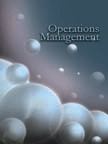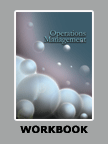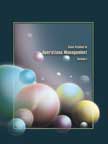The Making of Airbus A380: A Triumph of Science and Engineering




|
|
ICMR HOME | Case Studies Collection
Case Details:
Case Code : OPER056
Case Length : 13 Pages
Period : 1999-2006
Organization : Airbus, Boeing
Pub Date : 2006
Teaching Note :Not Available
Countries : France, Germany, Spain
Industry : Aircraft Manufacturing
To download The Making of Airbus A380: A Triumph of Science and Engineering case study
(Case Code: OPER056) click on the button below, and select the case from the list of available cases:

Price:
For delivery in electronic format: Rs. 300;
For delivery through courier (within India): Rs. 300 + Rs. 25 for Shipping & Handling Charges
» Operations Case Studies
» Case Studies Collection
» ICMR HOME
» View Detailed Pricing Info
» How To Order This Case
» Business Case Studies
» Case Studies by Area
» Case Studies by Industry
» Case Studies by Company
Please note:
This case study was compiled from published sources, and is intended to be used as a basis for class discussion. It is not intended to illustrate either effective or ineffective handling of a management situation. Nor is it a primary information source.
|
|
<< Previous
"The A380 opens a new chapter in the aerospace industry.
It will bring the benefits of air travel to many more people. The A-380 is a
symbol of what Europe can achieve by working together."1
- Jacques Barrot, Vice-President, EU Commission for
Transport in January 2005.
"A380 is a symbol of economic strength, technological
innovation, the dedication of the work force that built it and above all of a
confidence that we can compete and win in the global market."2
- Tony Blair, Prime Minister of Britain.
"It is the biggest aeronautical achievement in many
decades and will set new standards by which all future air travel will be now
judged."3
- Steven Udvar-Hazy, Chairman and Chief Executive Officer of
International Lease Finance Corporation (ILFC).
Introduction
|
On April 27, 2005, the Airbus A380, the world's first double-decker aircraft,
successfully completed its test flight in Toulouse, France. The flight lasted
almost for four hours.
The plane took off at 10:29 am from Toulouse-Blagnac Airport and was back by
2:23 pm. The overall length of 72.7 meters, wing span of 79.8 meters, height of
24.1 meters, and weight of 544.3 tonnes, made the A380 the biggest passenger
aircraft.
Commercial flights of the 555-seat aircraft were to begin in mid-2006 after 15
months of rigorous testing.
|
|
The A380 was manufactured by Airbus SAS (Airbus) to challenge the dominance of
US-based aircraft manufacturer Boeing's4 model B747, in the large aircraft
segment.
|
|
A380 was the first double-deck passenger airliner and it had a range5 of 8000
nautical miles (Refer to Exhibit I for the Specifications of A380).
It offered higher levels of efficiency and economy in passenger service.
According to Airbus, A380 would generate only half the noise of its closest
competitor - the Boeing 747.
The use of composites would enable it to burn 12% less fuel6 per seat and to
incur lower operating costs of 15-20%7 per seat when compared to the Boeing
747-400. The economical rate of fuel burn ensured fewer emissions of
pollutants. |
The Making of Airbus A380: A Triumph of Science and Engineering
- Next Page>>
|
|



